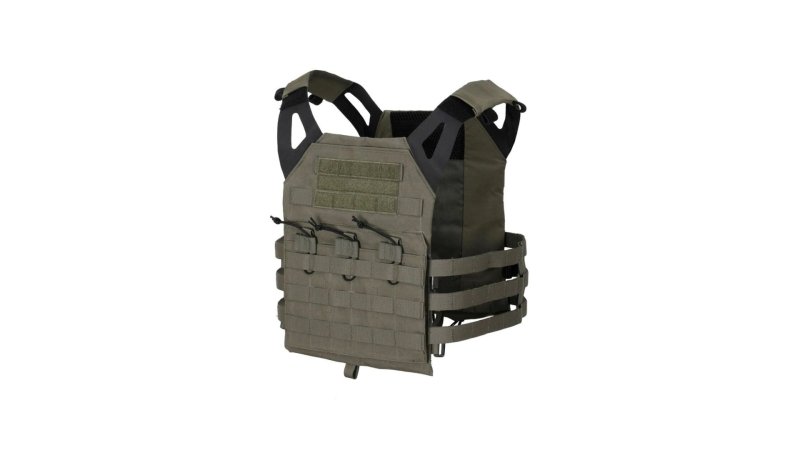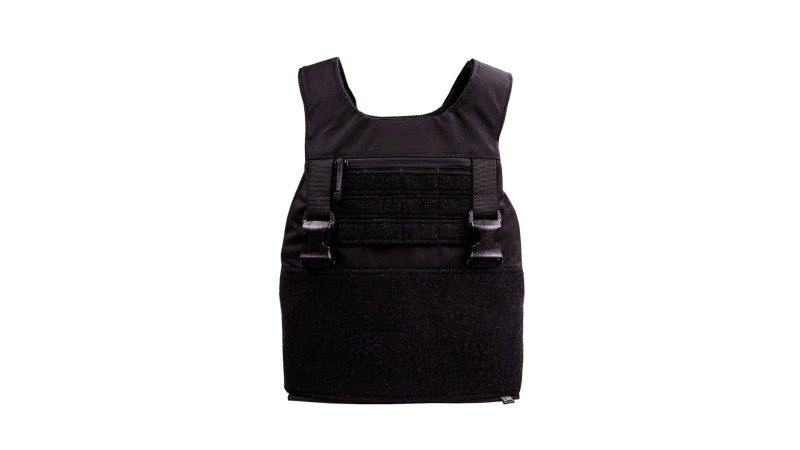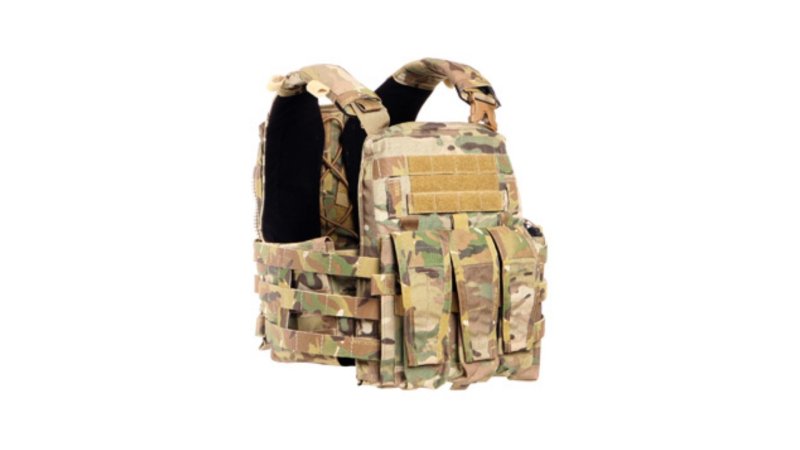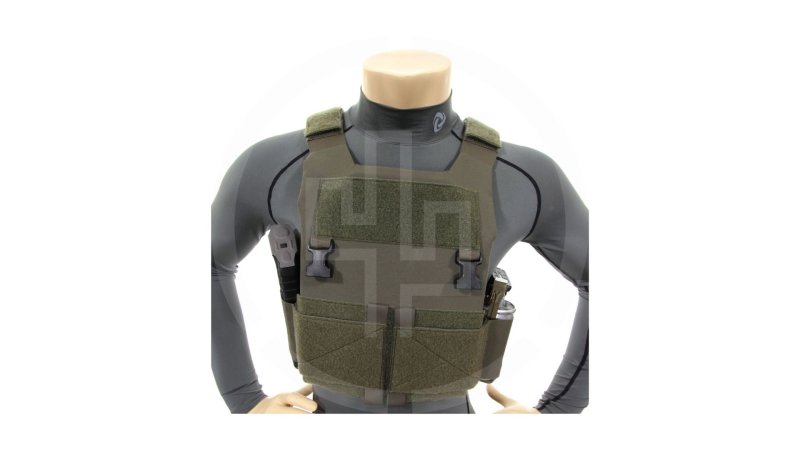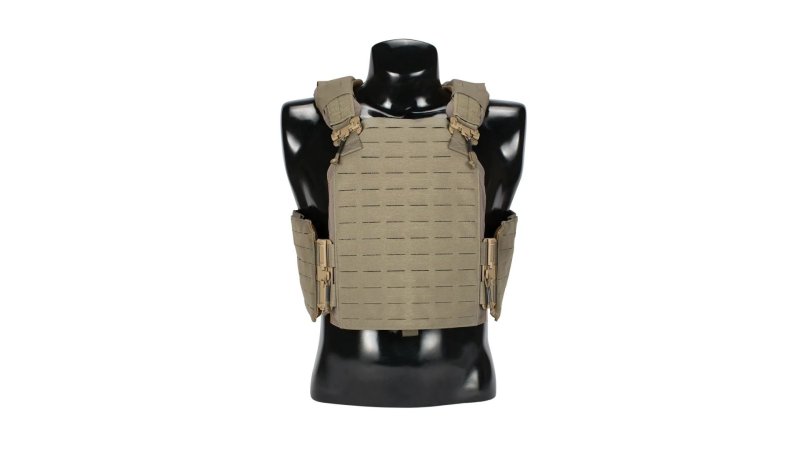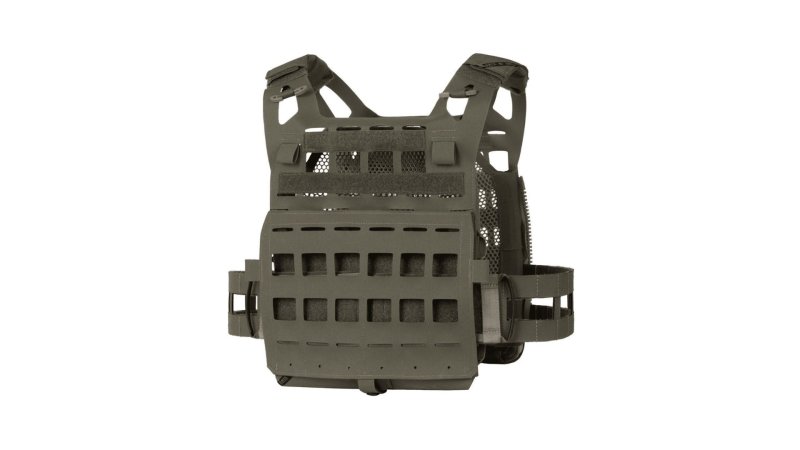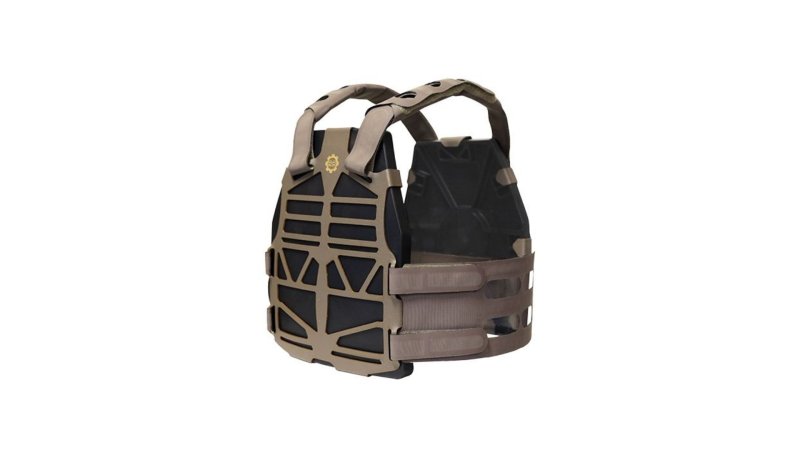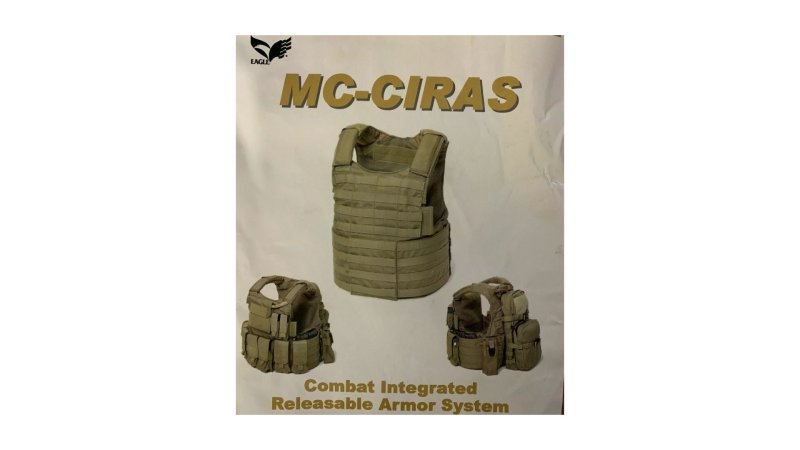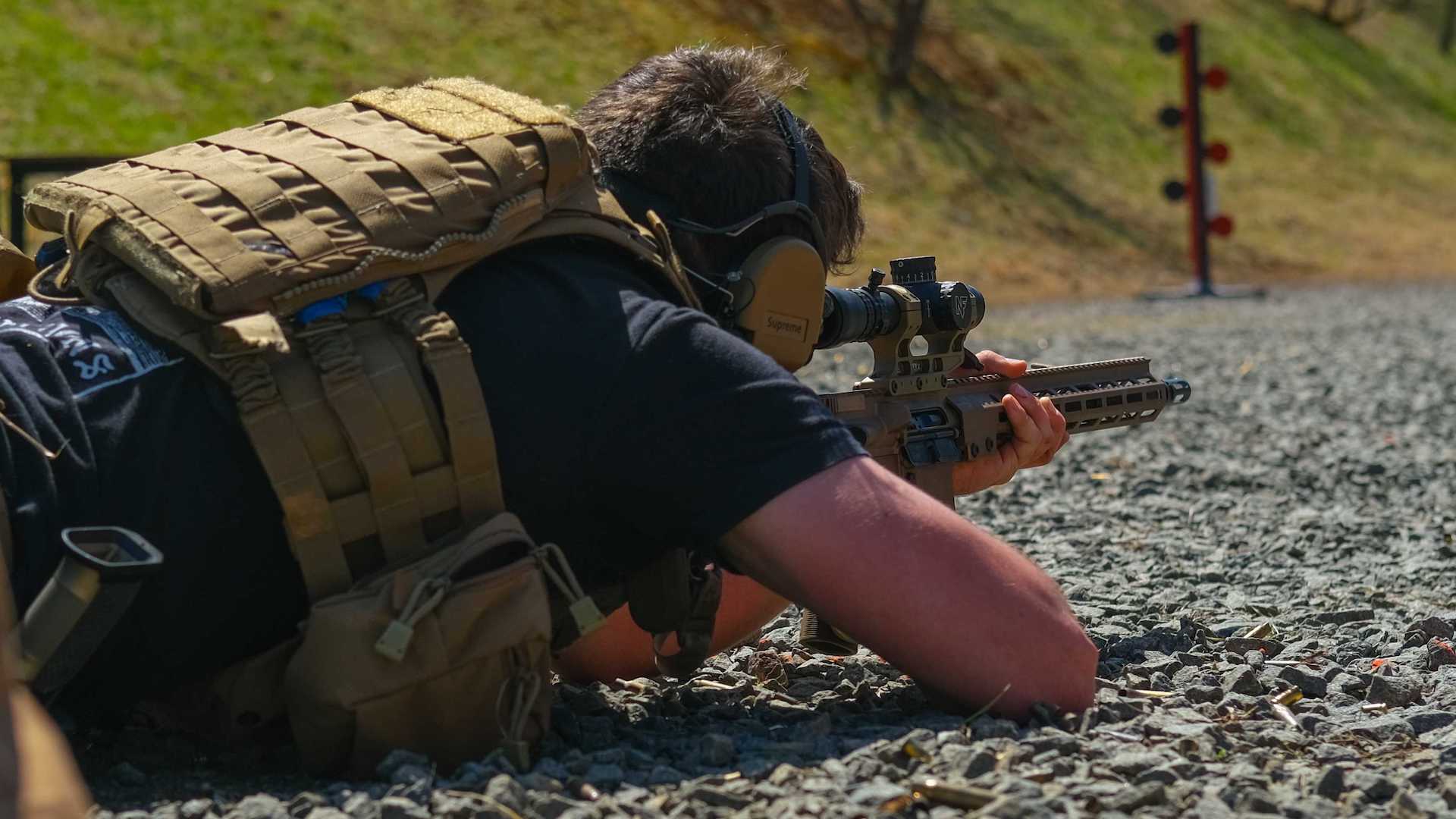

We may earn revenue from the products available on this page and participate in affiliate programs.
A plate carrier is designed to hold armor plates that protect your vital organs if you get shot in the upper body. The basic design is front and back panels — each equipped with a plate bag, which is a thin sleeve much like laptop slot on a backpack — shoulder straps, and a cummerbund. Many plate carriers, though, improve upon that standard by offering features for comfort and mobility, load-bearing capabilities, and longevity.
With so many options available, we compiled a list of the best plate carriers out there — the ones that strike the right balance of protection and features. We know they’re the best because we and our trusted experts conducted hands-on testing with all the options on this list. Plus, this article is not sponsored by any of the companies listed.
Best Overall
Crye Precision JPC 2.0
Pros
- The gold standard with tons of aftermarket support
- Slim and agile
- Reasonably lightweight
Cons
- Durability Concerns
- Fits very small on many users
- Needs many upgrades to be a general-purpose carrier
Product Specs
Best Value
Defense Mechanisms Mission Essential Plate Carrier
Pros
- Excellent load bearing
- Customizable in every way
- Excellent protection from backface deformation
Cons
- Not designed for general purpose military use
- Unpadded shoulder straps
- Limited MOLLE space
Product Specs
Editor’s Choice
Crye Precision AVS
Pros
- Multiple colors
- Customizable
- Comfortable in a variety of climates
Cons
- Expensive
- Complicated to set up
- Parts sold separately
Product Specs
Best Minimalist
Whiskey Two-Four Plate Carrier 13
Pros
- Easy to set up
- Inexpensive
- Still capable of carrying gear
Cons
- Limited adaptability
- Less comfortable for long periods of time
- Baggy platebags
Product Specs
Best for Comfort
First Spear Strandhogg
Pros
- Extremely comfortable
- Maximum MOLLE space
- Quick on and of
Cons
- Tubes are the only option
- No Velcro
- Limited placard support
Product Specs
Best Lightweight
Crye Airlite SPC
Pros
- Great balance of load-bearing and slim profile
- Light weight
- Adaptable
Cons
- Bought in pieces
- Less comfortable than other options
- Limited placard support
Product Specs
Best Amphibious
Su0026S Precision PlateFrame
Pros
- Virtually zero water retention
- Will fit any plate
- Light
Cons
- Less comfortable in stock configuration
- Needs Su0026S accessories
- Limited support for most military plates
Product Specs
Best Surplus
Eagle Industries CIRAS
Pros
- Inexpensive
- Readily available
- Durable
Cons
- Large and heavy
- Surplus market is at the whims of collectors
- Difficult to assemble and put on
Product Specs
Why you should trust us
For this article, I tested eight plate carriers over the course of several months and in a variety of environments ranging from military field exercises to physical fitness training to static ranges. To review the plate carriers, I drew upon my nearly eight years of experience using and selling tactical gear. In researching this topic, I also interviewed dozens of U.S. service members, both active and retired.
Types of plate carriers
While plate carriers have similar features, they vary in construction materials and intended purpose. While they all come in a range of styles, they can be categorized into four types: low-profile, training, maritime, and general-purpose.
Low-profile
A low-profile plate carrier refers to either a concealable plate carrier that fits under a shirt or jacket, or a carrier that fits over your shirt and holds gear but takes up very little space and doesn’t weigh a whole lot. They generally feature slick plate bags, minimal cummerbunds, and little to no MOLLE webbing. Examples include the Velocity Systems ULV and Crye Precision LV-MBAV
Training
A training plate carrier, usually designed for civilian use, fits somewhere between a low-profile carrier and a general-purpose carrier. What that means is it has more features than a low-profile but not as much as a general purpose. Instead of significant MOLLE webbing, it will feature things like placards, Velcro attachments, padded plate bags, and built-in admin pouches. An example of this is the MEPC from Defense Mechanisms.
Maritime
Maritime plate carriers are meant for use close to water, such as with Marines, sailors, and Coast Guardsmen. They’re designed so if you fall into a body of water, you can surface and avoid drowning. In general, they feature some sort of quick-release mechanism, and modern examples use thermoplastic or laminate materials, which won’t absorb water. Examples include the CIRAS Maritime and S&S PlateFrame.
General-purpose
General-purpose carriers are the category that most body armor vests worn by military personnel fall under. Designed for direct combat, these vests prioritize load-bearing, protection, and MOLLE space to make sure that the individual combatant has everything they need and can carry it on long missions. Examples include the First Spear Strandhogg and Crye AVS.
Key features of plate carriers
Webbing
Most plate carriers are equipped with rows of nylon webbing that you can use to attach gear pouches. The carrier itself is considered a piece of Modular Lightweight Load-carrying Equipment, or MOLLE, and the webbing is called a Pouch Attachment Ladder System, or PALS. To use it, you just weave the pouch’s strap(s) through the webbing.
Cummerbund
The cummerbund is how you secure your plate carrier on your body. It’s fairly intuitive in that you fasten it around your waist. However, how you literally secure it around your body varies. Some cummerbunds use Velcro or plastic clips, while others use a more expensive buckle.
Quick-release system
A quick-release system is an important safety feature on a plate carrier, especially if you wear it for maritime operations. As the name suggests, you use the system when you need to doff — an old English word for “removing” — the carrier quickly. To activate it, you pull a ripcord or something similar.
Comfort features
A plate carrier loaded with gear and holding armor plates will eventually feel heavy, no matter who you are. Therefore, certain features like mesh lining for ventilation or padded shoulder straps will make your plate carrier more tolerable to wear for longer periods of time. Additionally, some brands offer complex harness systems to make a carrier more bearable to wear. Comfort is something that shouldn’t be ignored when buying a plate carrier.
Plate carrier pricing
Budget
Plate carriers in the $80 to $250 price range are extremely basic. They’re often meant for low-profile or civilian usage. Examples of these are the Defense Mechanisms MEPC and Whiskey Two-Four Plate Carrier 13.
Mid-range
Plate carriers ranging from $250 to $600 are meant for hard duty. They’ll be constructed from durable materials and designed with advanced features. Most carriers on the market fall into this category, and examples from our list range from the JPC to the Strandhogg to the Plateframe.
Premium
Carriers costing more than $600 are the cream of the crop in terms of technology and materials, and they will often innovate in ways that put them miles ahead of the competition. Examples of this are the Crye AVS, CAGE Armor Chassis, or the S&S Plateframe Modular.
FAQs on plate carriers
You’ve got questions, Task & Purpose has answers.
Q: What plate carrier do Marines use?
A: Currently for general issue, the KDH Plate Carrier Gen II is being phased out in favor of the VPA Plate Carrier Gen III.
Q: Is it legal to wear a plate carrier in public?
A: It’s legal to wear a plate carrier in public in most states and localities, but you should always review local laws or consult legal experts if you have questions regarding a legal issue.
Q: Do cops wear plate carriers?
A: Police officers wear whatever is permitted by their department. With that being said, they will wear adequate protective gear for their given assignment. A plate carrier with rifle plates might be appropriate when serving a high-risk warrant or confronting a subject armed with a rifle.
Q: Is a plate carrier body armor?
A: No, not by itself. Without armor inserts, a plate carrier is just a cloth bag and some straps. To protect against ballistic threats, you need to use soft or hard armor plate inserts.
